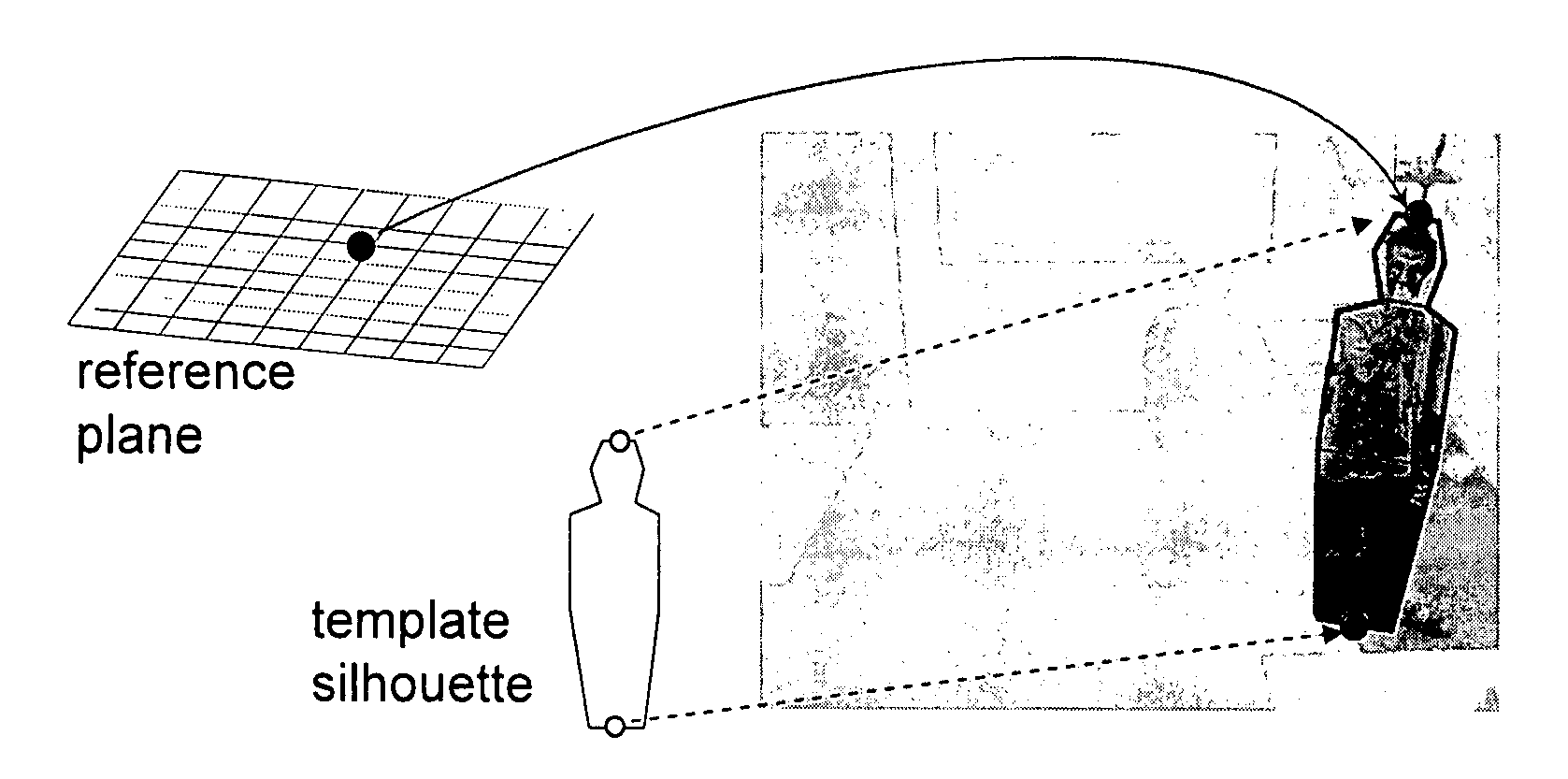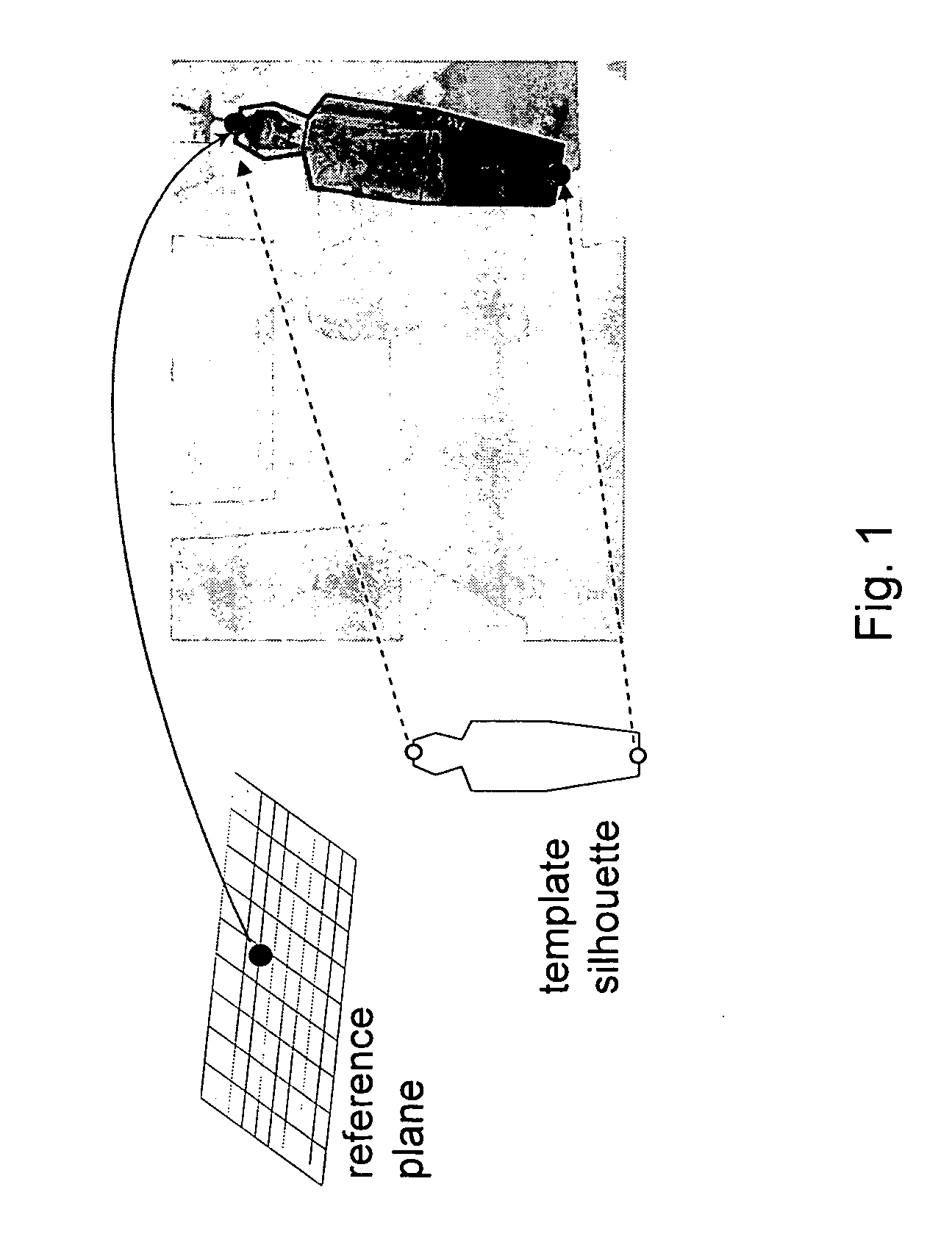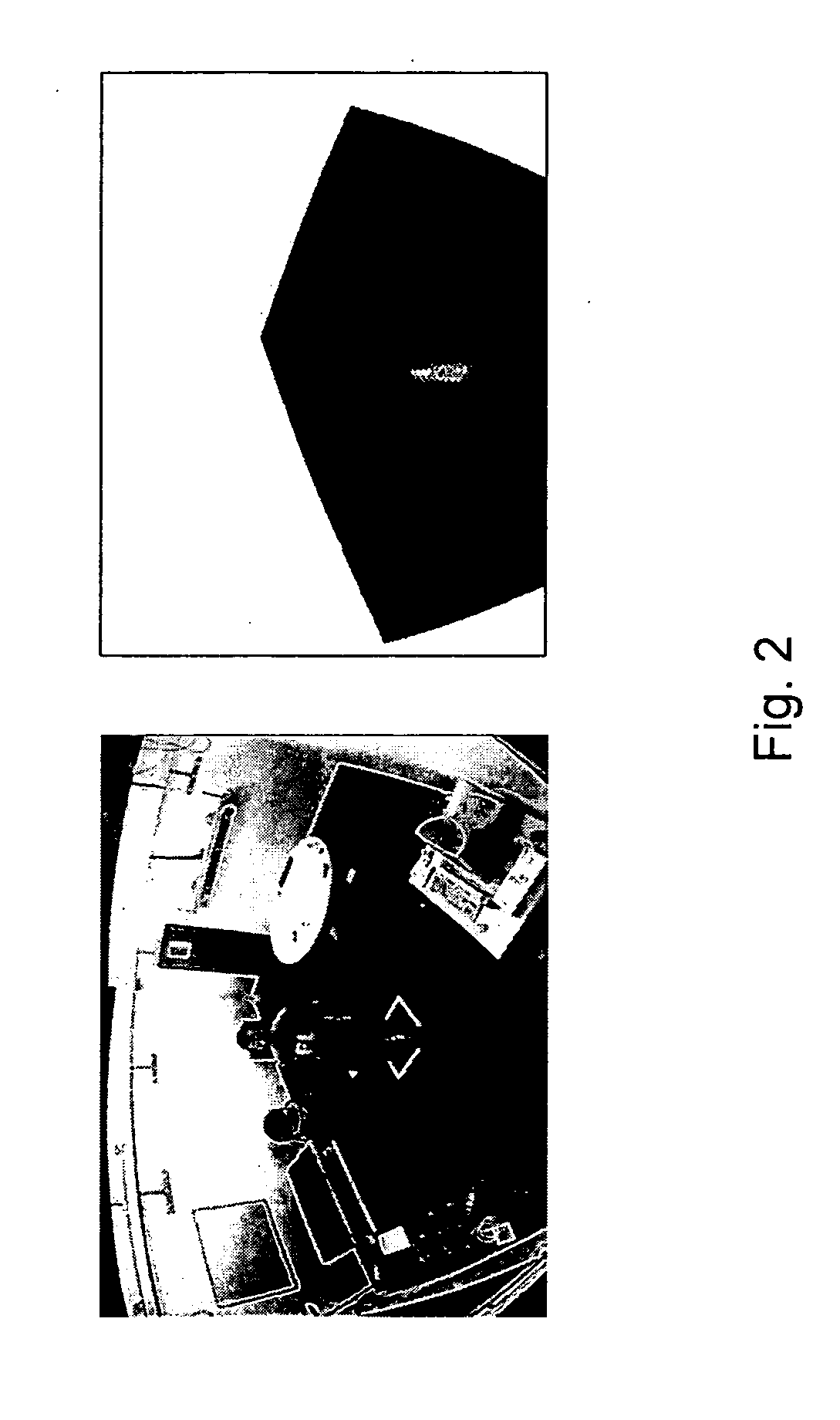Method for efficient target detection from images robust to occlusion
a target detection and image technology, applied in the field of human centered applications, can solve problems such as inefficiency
- Summary
- Abstract
- Description
- Claims
- Application Information
AI Technical Summary
Benefits of technology
Problems solved by technology
Method used
Image
Examples
Embodiment Construction
[0012]The method according to the present invention initially requires the user to provide geometric information about the capturing cameras (the 3D position of the optical centre and camera orientation, as well as intrinsic parameters of the sensor and the optical lenses; i.e. camera calibration parameters), and to perform the following steps:[0013]1. Choose a suitable numerical representation for the object's configuration to be recognized. As an example, if a rigid and vertically symmetric object moves on a horizontal plane all the object's configurations can be represented in two-dimensional space, through a two dimensional vector describing the objects coordinates on the horizontal plane. An instance of such representation is hereafter referred to as the object's state.[0014]2. Select a geometric object model that is parameterized with the chosen numerical representation and implement an image projection procedure that maps the object mode onto an image according to a given sta...
PUM
 Login to View More
Login to View More Abstract
Description
Claims
Application Information
 Login to View More
Login to View More - R&D
- Intellectual Property
- Life Sciences
- Materials
- Tech Scout
- Unparalleled Data Quality
- Higher Quality Content
- 60% Fewer Hallucinations
Browse by: Latest US Patents, China's latest patents, Technical Efficacy Thesaurus, Application Domain, Technology Topic, Popular Technical Reports.
© 2025 PatSnap. All rights reserved.Legal|Privacy policy|Modern Slavery Act Transparency Statement|Sitemap|About US| Contact US: help@patsnap.com



